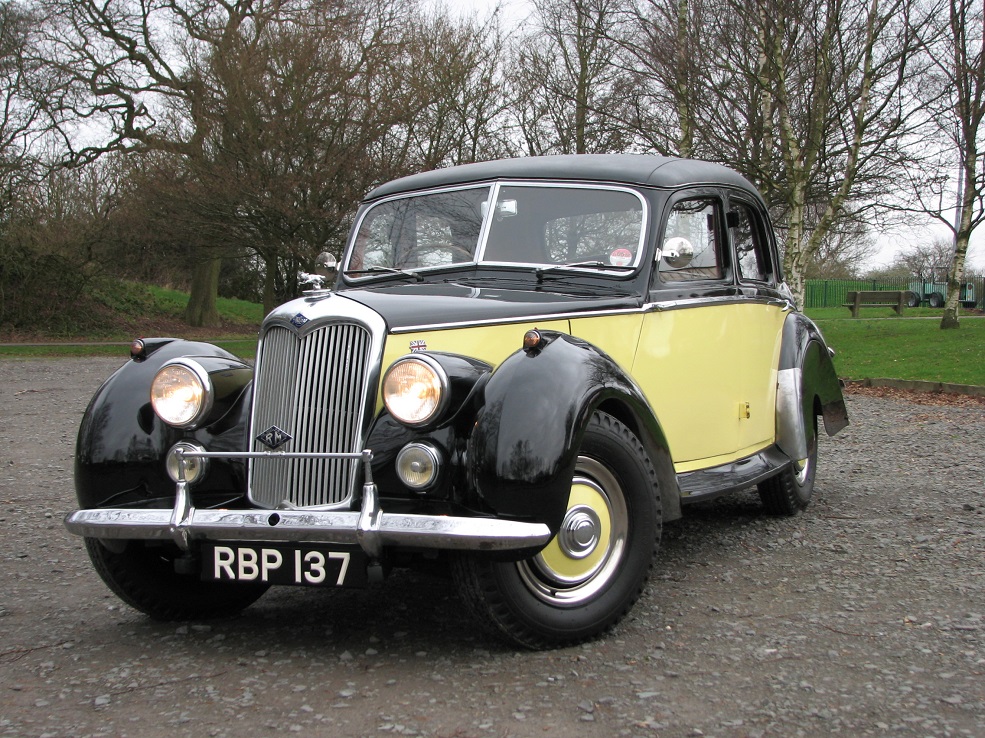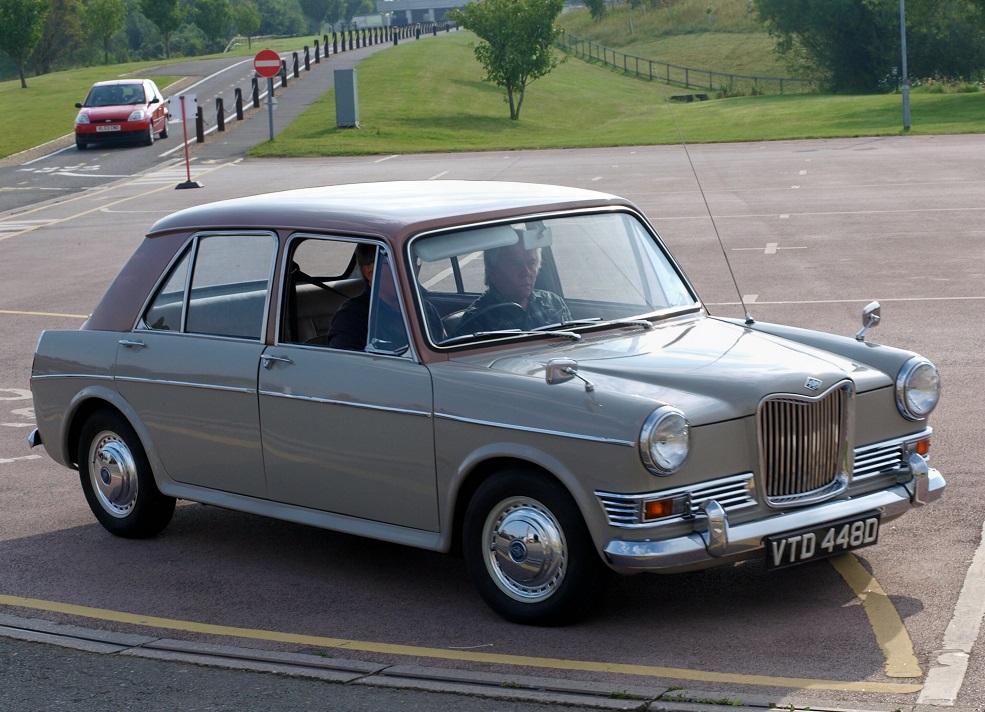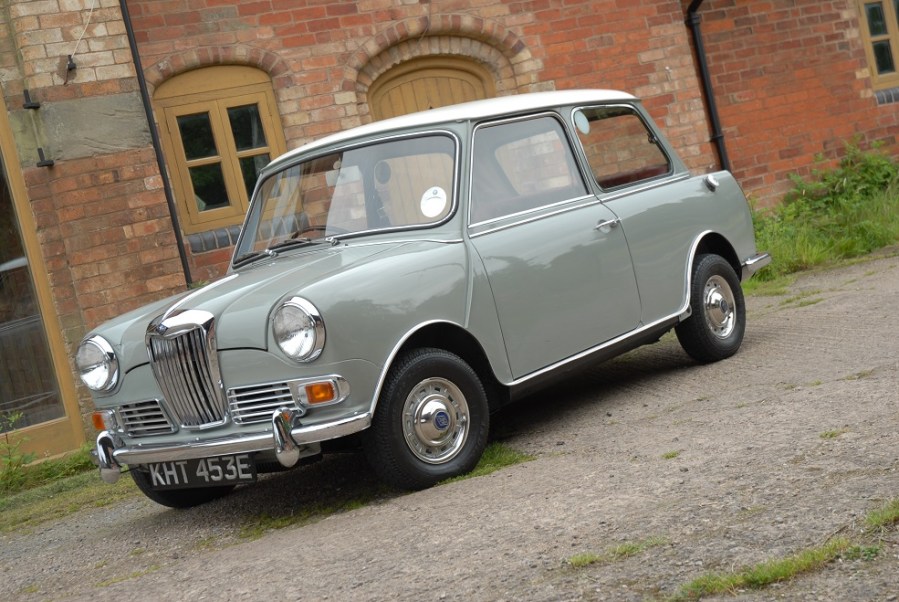Fifty years ago saw the first great British car name to be axed. In retrospect it would turn out to be the first of many over the decades to come, but at the time few people noticed or particularly cared.
On the evening of July 8, 1969, the British Leyland Motor Corporation circulated a press release which stated that, with immediate effect, the manufacture of Riley cars would cease, thus bringing to an end 62 years of the Riley name. The Times ran the story as a single-paragraph item tucked away in the ‘In Brief’ columns, which was a pretty good summation of how much the average person cared about Riley in 1969.
Until that day there was a choice of three Riley cars available to those few who wanted them. There was the Riley Elf, a curious Mini-based three-box saloon with luxury pretensions including an upright chrome grille, leather seats and a full-width wood veneer dashboard. There was the Riley Kestrel, a spin-off of the popular 1100/1300 range, offering traditional chrome, wood and leather teamed with an engine with twin carburettors and a Cooper-spec cylinder head. And there was the Riley 4/72, a similarly patrician version of the mid-size Farina family. Not a bad three-car range in itself, but they sold in tiny numbers. The Kestrel was the best seller, but only around 5000 were made each year – two per cent of the 220,000 1100/1300s made in total. The Elf shipped about 3500 cars, or about 1.5 per cent of annual Mini production, while the 4/72 sold just 1700 examples in 1968, or around four cars per day.
One of the very last adverts BL ran for the Kestrel sold it as a car “For the true sporting driver, the kind of driver who wears the black string gloves and takes his or her driving seriously. The person who appreciates the luxury seating with the traditional woodwork and exemplary road holding.” That certainly summed up the essence of the Riley marque and could have applied to the very first models made in 1919 when five brothers wrested control of their family’s Coventry bicycle firm from their father and began making upmarket cars with a sporty bent in terms of both style and performance. Riley gained a reputation for offering traditional, elegant coachbuilt bodies on top of forward-looking engineering – a reputation that was cemented in 1926 by the launch of the Riley Nine, the first car to feature the powerful and free-revving Riley Twin-Cam engine which was to become the firm’s hallmark.

Rileys became the car of choice for motorsports enthusiasts and well-heeled gentlemen drivers and had the silverware to back up the image. Rileys claimed class wins at the gruelling TT Race in 1929, 1930 and 1931 and outright victory in 1932, 1935 and 1936. A Riley Nine won its class in the 1931 Monte Carlo Rally. A Riley Nine Kestrel finished in fourth place at Le Mans in 1933 and in 1934 six of the top 13 finishers in the 24-hour race were Rileys, including second and third position.
But all that seemed a long time ago in 1969, referenced only occasionally, and rather desperately, by the tweed-clad gents in the Riley Motor Club (founded 1925) when the British Motor Corporation re-used a prestigious name like Kestrel on a front-wheel drive saloon. The problem with Riley was that the very demographic that was so clearly referenced in its advertising – the flat-capped, driving-glove-wearing, upper-middle class sportsman blitzing along a country road between dawn race meet and lunch at the golf club – was a dwindling market in the increasingly egalitarian and forward-looking 1960s. Instead of dapper and traditional, Rileys had become stuffy and conservative. The mid-size executive saloon, exemplified he Rover P6 and the Triumph 2000, was well-established, as were more modern and go-getting mass-market models like the Ford Cortina 1600E. Against this svelte, modern competition the chrome-clad Riley 4/72 with its squashy leather seats and equally squashy handling was simply from another era. Even the more technically advanced Kestrel, with front-wheel drive and Hydrolastic suspension, wasn’t really the baby sports saloon that it was purported to be. It cost more than both the MGB GT and the Mini Cooper S, and those were what the well-heeled driving enthusiast who wanted a practical but fun car with a sporting edge and competition pedigree bought in 1969, re-badged Morris 1300 or an Austin Cambridge with a fancy dashboard.
Ever since Riley had gone into receivership in 1938 and (after a failed bid by BMW, no less) been folded into Morris its new owners had struggled to know what to do with it. Riley sold as many coachbuilt sports saloons in a year as Morris built mass-produced Minors in a fortnight, and the two cultures never gelled. BMC gradually squeezed out Riley’s engineering independence – the infamous Pathfinder of 1953 used the famous Twin-Cam engine and bespoke rear suspension of the post-war RM in the body of the Gerald Palmer-designed Wolseley 6/90 but proved to be more ponderous and slower than the outgoing model and was a sales flop. The Riley Two-Point-Six which followed really was just a rebadged Wolseley, with a leaf-sprung rear axle and the slow-revving, overweight BMC C-Series six-pot. It sold just 1000 examples per year. Rather more successful was the Riley One-Point-Five, based on the Wolseley 1500 which in turn was a rebodied and re-engined Morris Minor. The One-Point-Five did at least have spirited performance and good handling, recapturing something of the essence of the famous Riley Nine. But the 40,000 One-Point-Fives sold in eight years were small change against more than 100,000 Wolseleys and 660,000 Minors sold in the same period.

BMC tried to pitch the marque as its flagship, combining the luxury of a Wolseley and the performance of an MG. But to opt for a Riley meant paying around 20 per cent above the rate for one of those cars and all you really got was a badge and some different trim. A £1290 Riley 4/72 was little better than a £1025 MG Magnette MkIV and it was essentially the same car as an £840 Morris Oxford. The Riley Kestrel was outsold significantly by the £100-more-expensive Vanden Plas Princess 1100 because buyers were willing to pay for the genuinely coachbuilt luxury of the Princess which the Kestrel offered a mere evocation of.
The owners of Riley had simultaneously failed to re-invent the marque for changing times (think what a true Riley equivalent to the Rover P6 or BMW Neue Klasse could have been…) and neglected what had made it special in the first place. It simply withered away because it had lost its identity. By the time BL took over all three Riley models were losing money. BL’s decision to axe the badge was the right call and, if anything, was long overdue. Ironically, after its original bid 82 years ago, BMW is the owner of the Riley name today.





